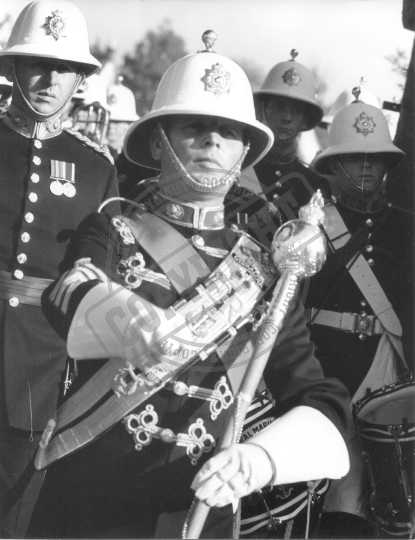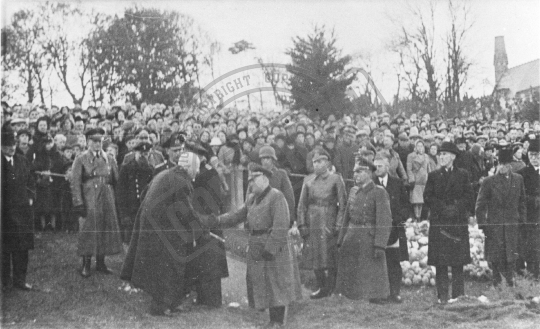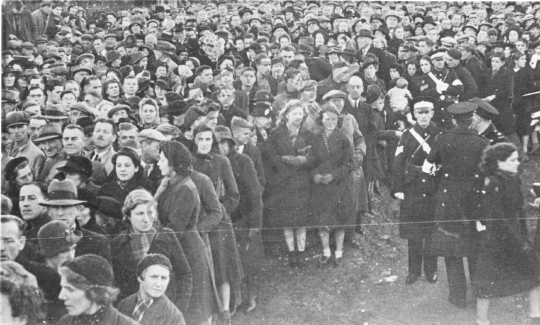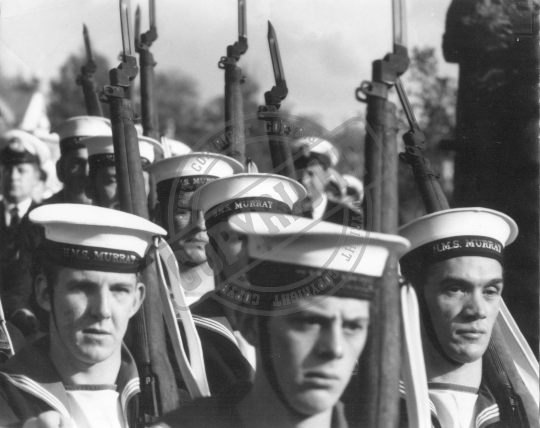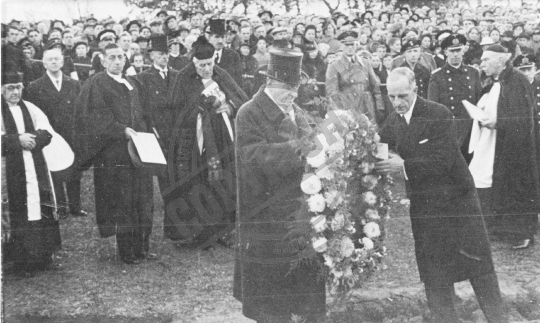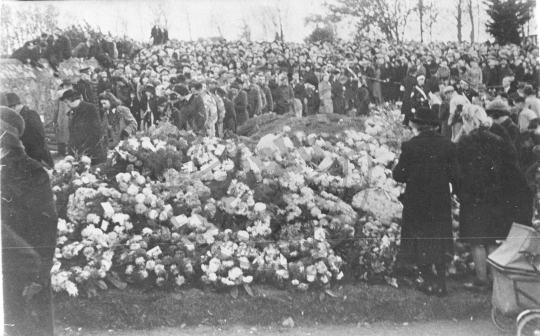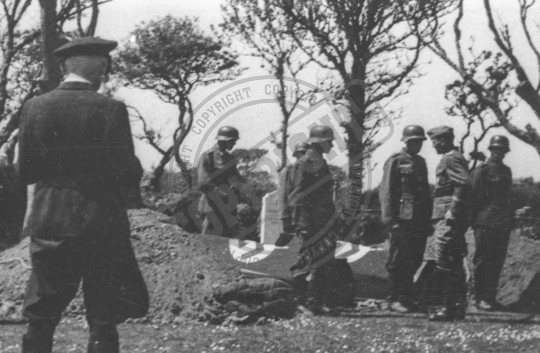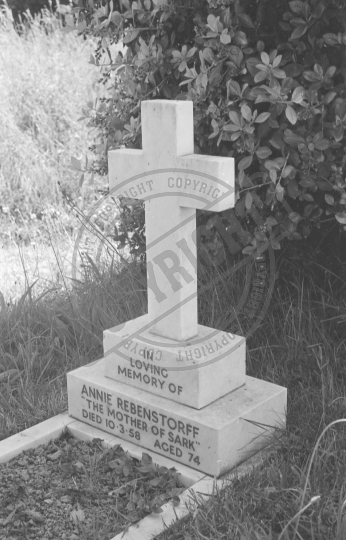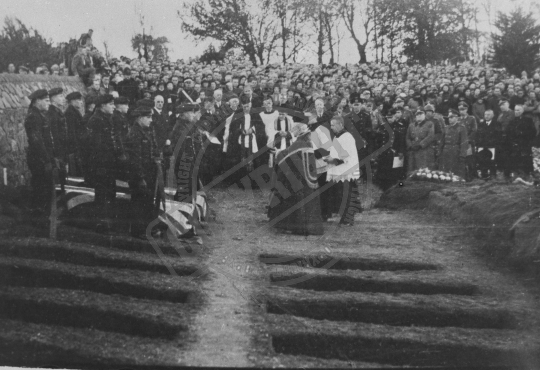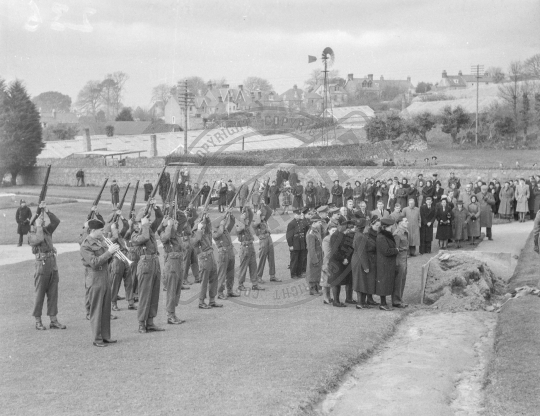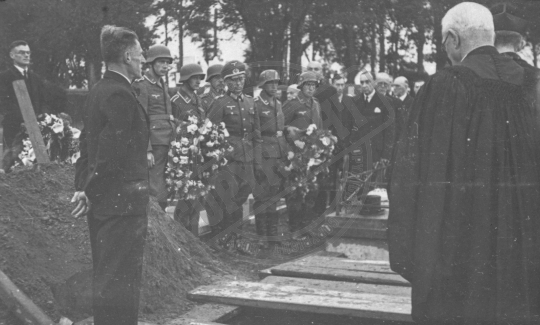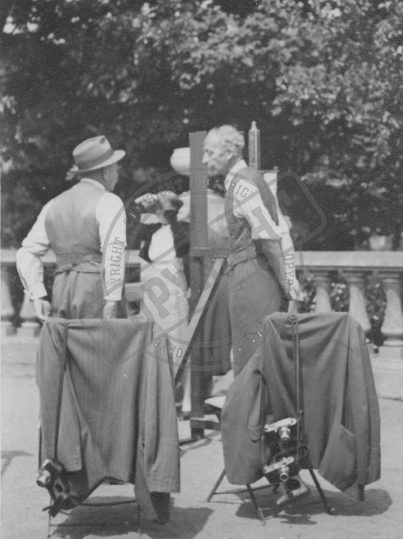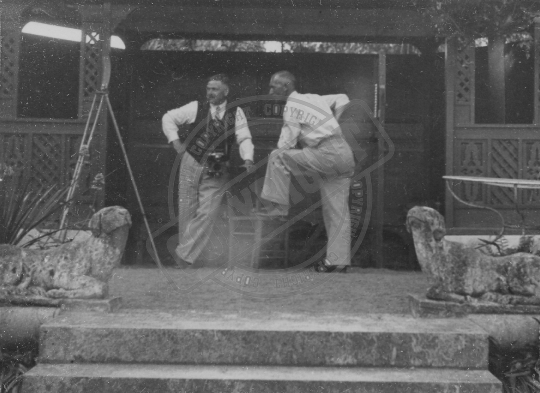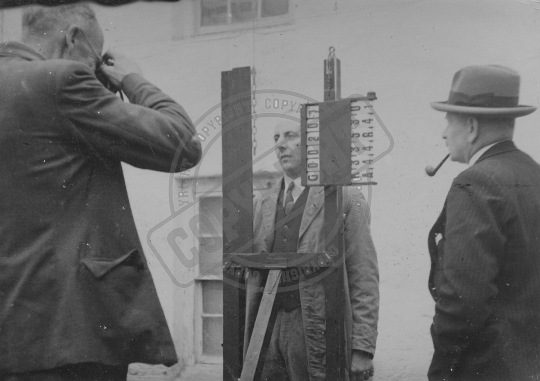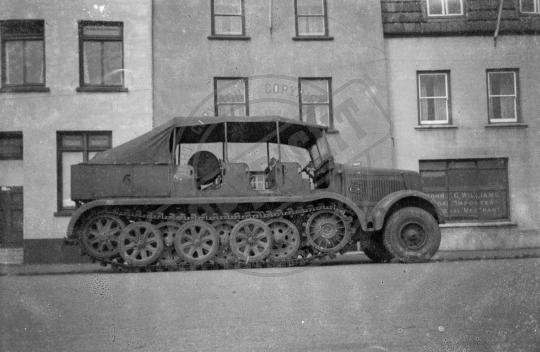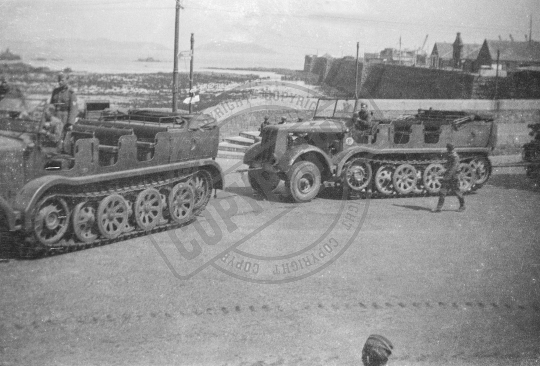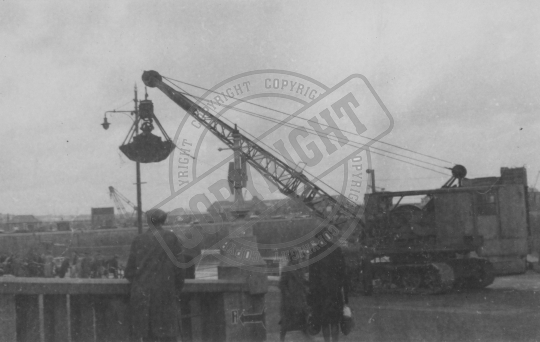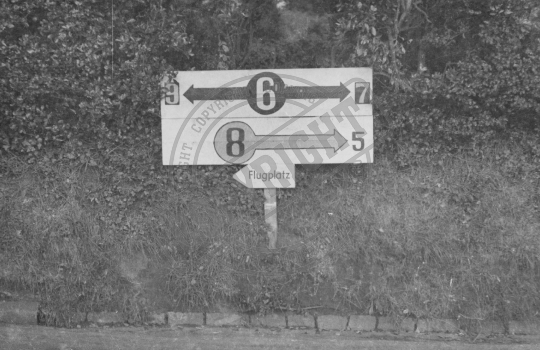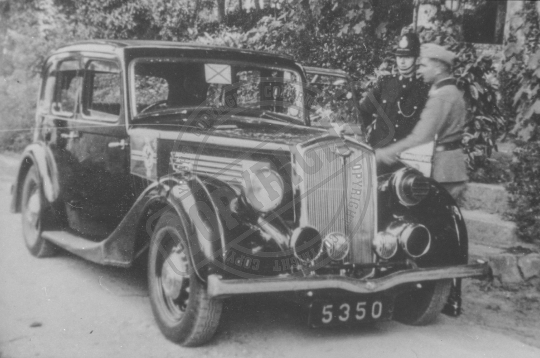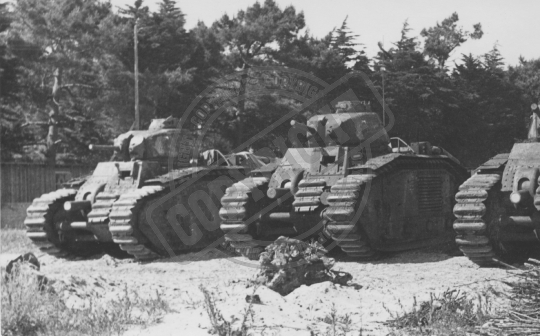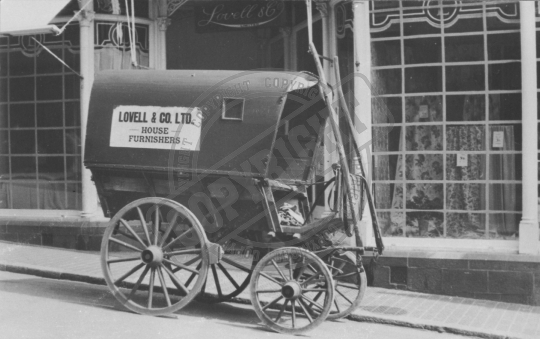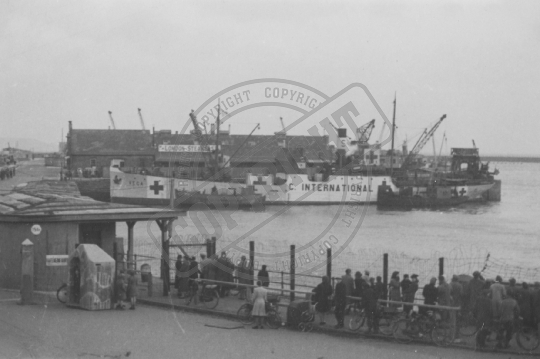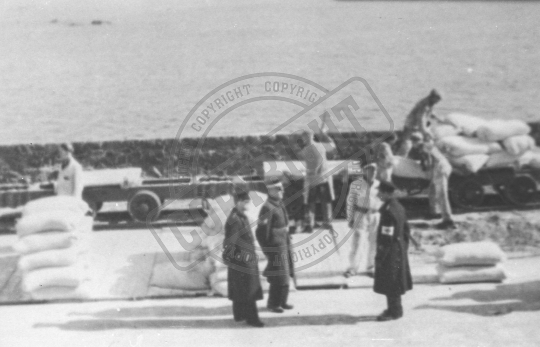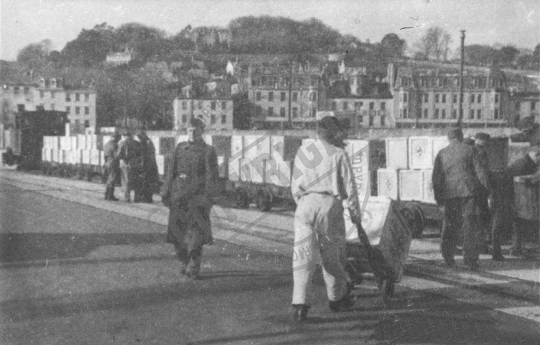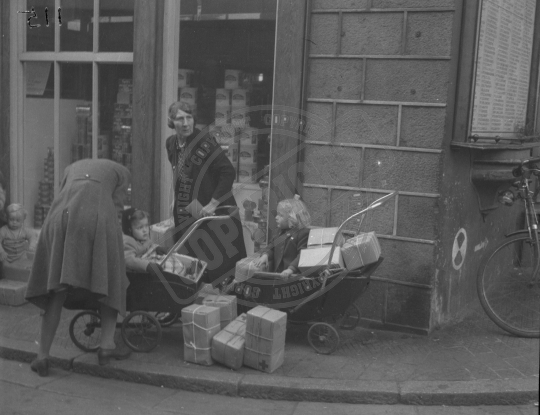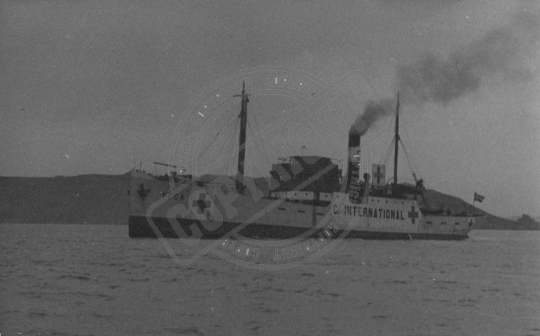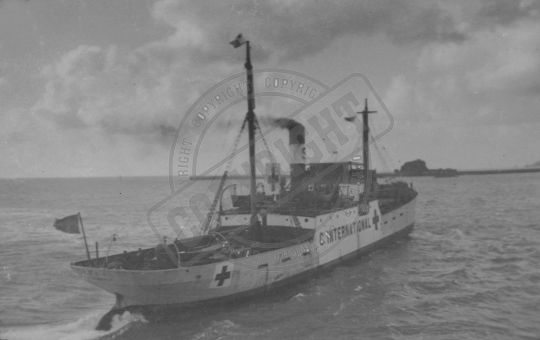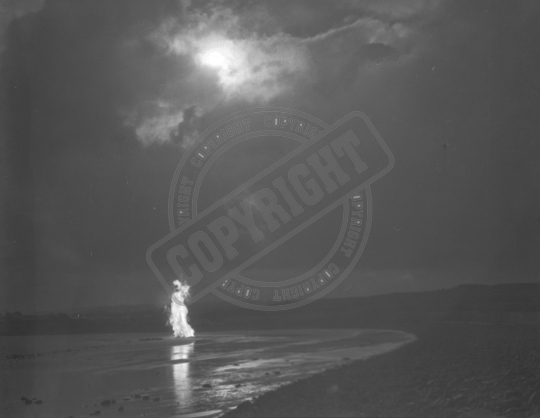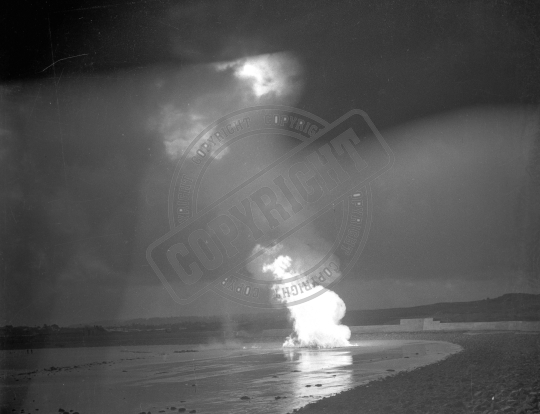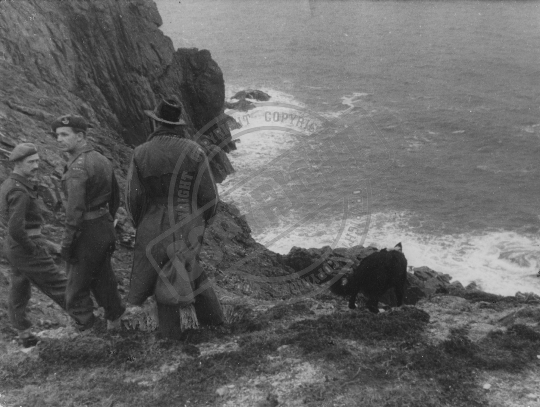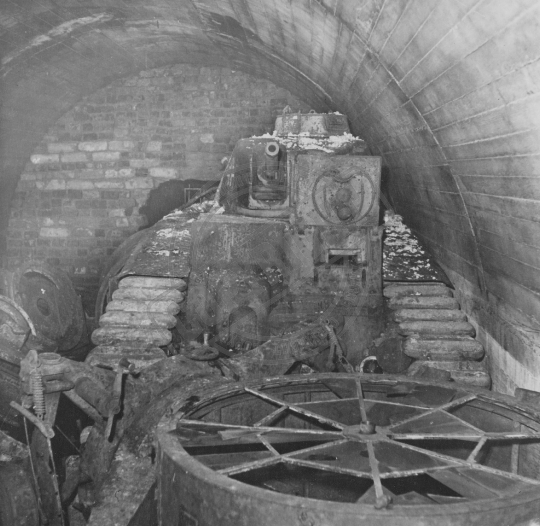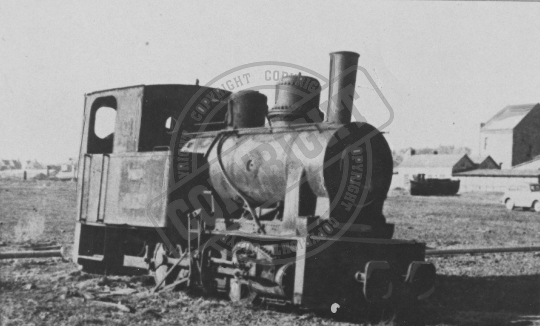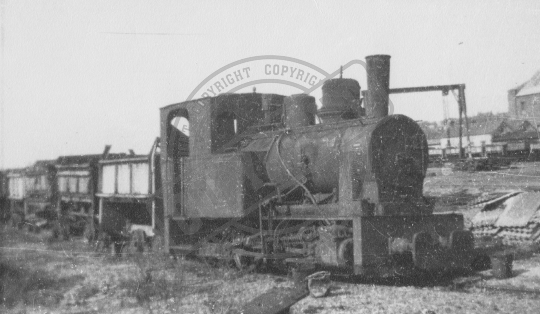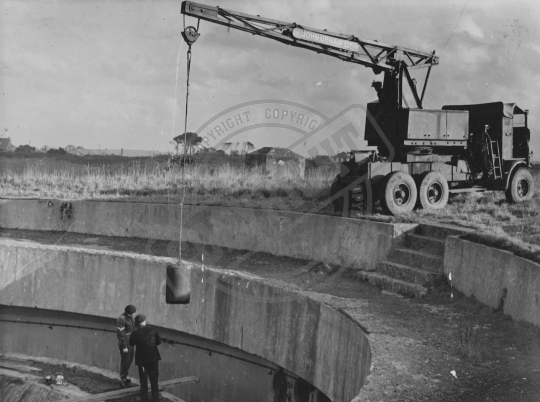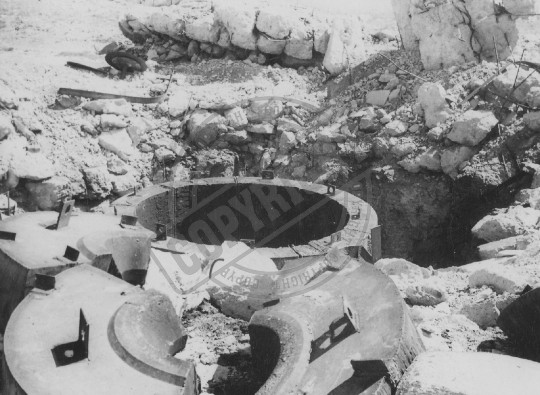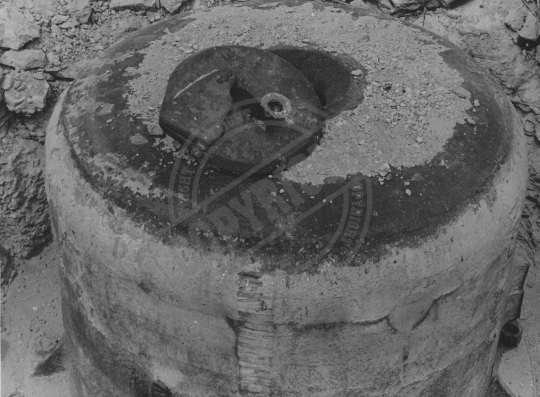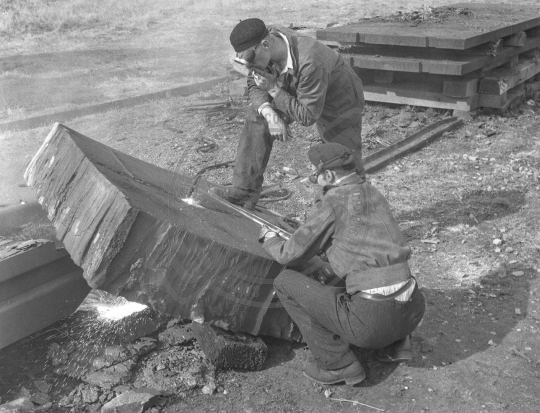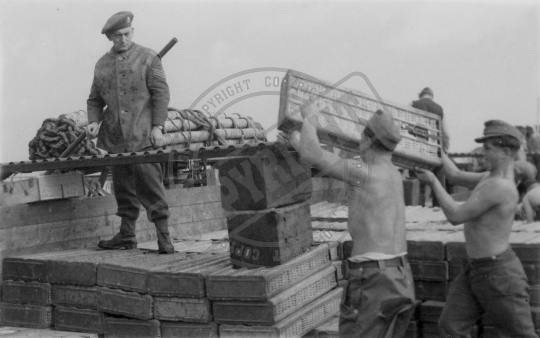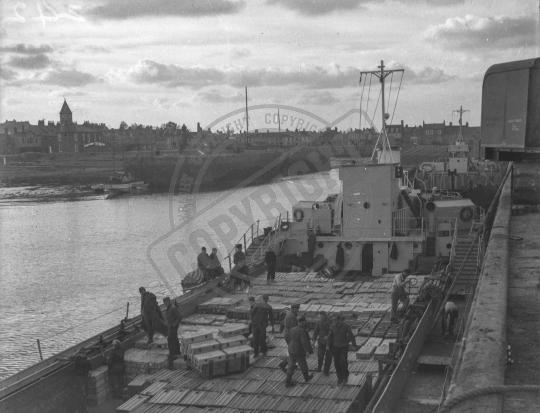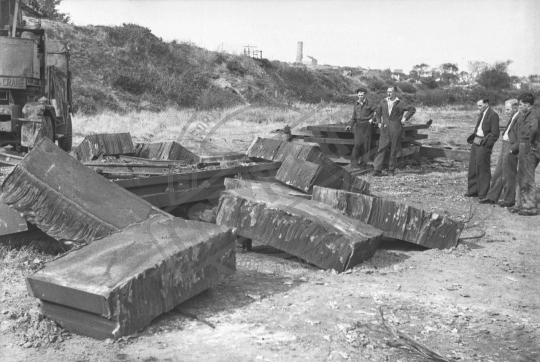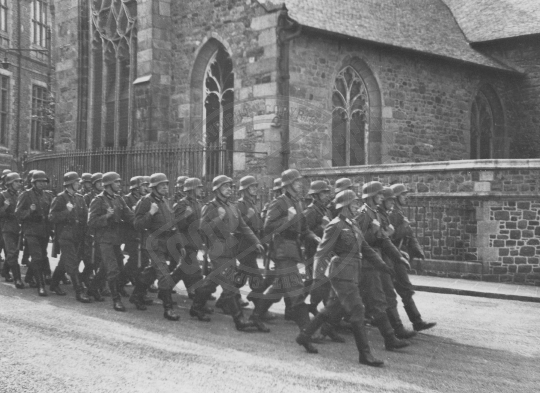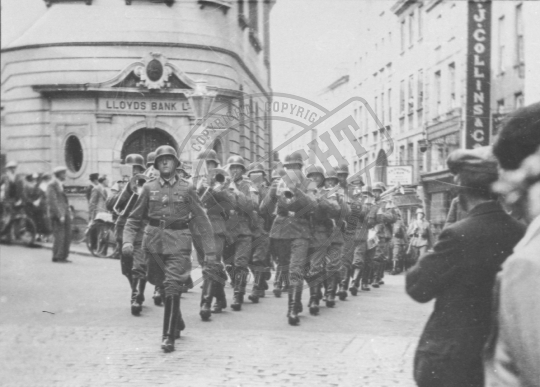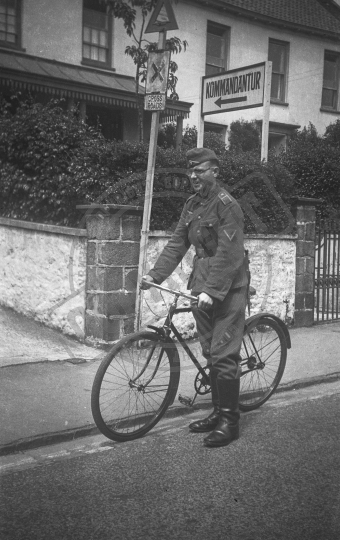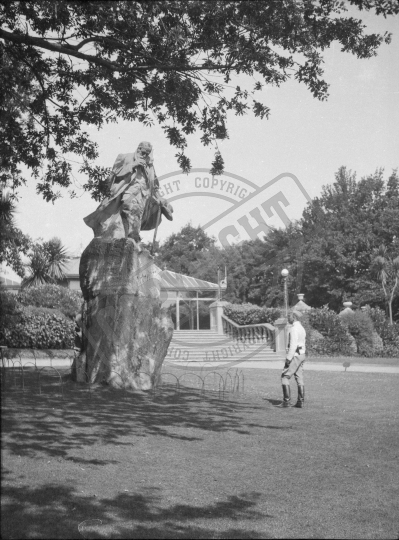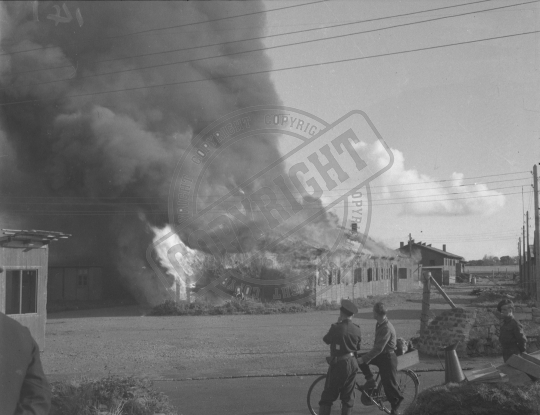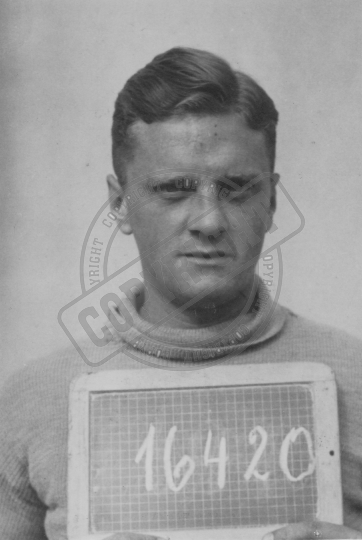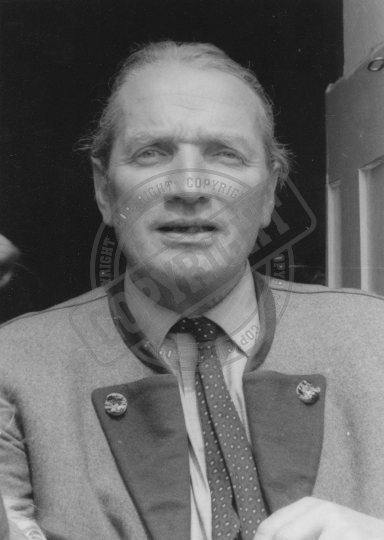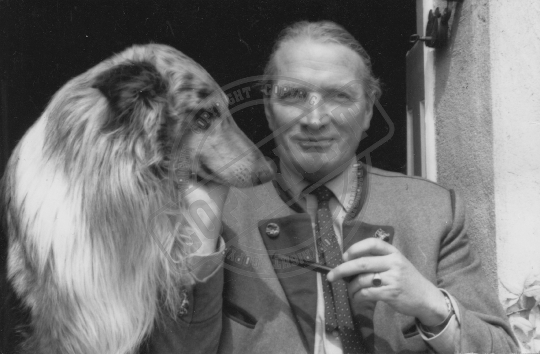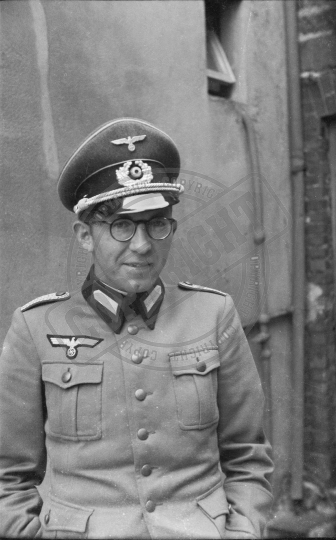Results (387)
TPL_00173
Funeral service for Royal Navy victims of HMS Charybdis and HMS Limbourne who were buried with full military honours at Le Foulon Cemetery.
TPL_00172
Funeral service for Royal Navy victims of HMS Charybdis and HMS Limbourne who were buried with full military honours at Le Foulon Cemetery.
TPL_00168
Funeral service for Royal Navy victims of HMS Charybdis and HMS Limbourne who were buried with full military honours at Le Foulon Cemetery.
TPL_00167
Funeral service for Royal Navy victims of HMS Charybdis and HMS Limbourne who were buried with full military honours at Le Foulon Cemetery.
TPL_00164
Two soldiers who were killed when clearing their own mines immediately after the occupation are buried in the cemetery near St Peters church in Sark.
TPL_00163
Mrs Annie Rebenstorff an English born lady who married a German national and had lived in that country prior to WW1. During the Occupation she was renowned for the work she did to aid islanders in Sark, so much so she was know as 'The Mother of Sark'.
TPL_00162
Funeral service for Royal Navy victims of HMS Charybdis and HMS Limbourne who were buried with full military honours at Le Foulon Cemetery.
TPL_00157
Military funeral held in Jersey for RAF Sergeants Dennis Charles Butlin and Abraham Holden which was attended by Bailiff Alexander Coutanche on 6th June 1943.
TPL_00180
Messrs. Toms and Keates in a moment of relaxation at Candie Gardens outdoor "studio" - the balcony east of the bandstand.
TPL_00178
The "photo-census" in progress in the summer of 1941. Charles Toms is shown photographing a subject, with reference number displayed on an easel.
TPL_00381
German half-tracks were linked together and used to transport heavy loads such as the guns of Batterie Mirus. Seen here are at least three vehicles having exited the White Rock turning to ascend St Julians Avenue. Note the damage to the road surface in the forground.
TPL_00380
Heavy construction equipment was used during the building of the fortifications, this crane with fitted with a grab was used during the excavation process. Photographed at the top of the slipway next to the Albert statue, note the road sign painted at the foot of the wall and the 'Antee’ floating crane seen in the background.
TPL_00378
German road sign at Forest Road which makes the junction near La Villette in St Martins. The Germans listed the local roads by colour and number, here we see red route 6 leading on to routes 7 and 9. This junction also leads from yellow 8 to yellow 5. The small sign reading Flugplatz is indicating the direction to the airfield.
TPL_00328
A Guernsey police officer and German chauffeur stand by the Commandants car while he pays a visit to the Little Chapel at Les Vauxbelets, Guernsey.
TPL_00326
French Char bis B1 tanks used by the Germans awaiting shipment from Millbrook, Jersey to France 29th May 1945.
TPL_00376
A crowd has gathered at the Weighbridge, Guernsey to see the Red Cross ship SS Vega which has docked at the Cambridge Berth, St Peter Port with much needed supplies for the islands population. Note the German century box and the heavily protected fencing around the harbour.
TPL_00316
Food from the SS Vega being unloaded by Germans from railway wagons whilst supervised by the St John's Ambulance in St Peter Port.
TPL_00314
Crates of Red Cross parcels arrive at the docks in Guernsey before being transported by train to a secure store.
TPL_00312
The arrival of the Swedish ship SS Vega chartered by the International Red Cross to bring food and supplies to the starving islanders did much to alleviate the suffering of the civilians. Here Red Cross parcels were distributed to the islanders at Les Riches, St Peter Port.
OA_074
The Swedish ship SS Vega, chartered by the International Red Cross to take Red Cross Supplies to the Channel Islands. She is seen here off St Aubin’s Bay after leaving St Helier Harbour on Friday, 11th May, 1945.
CIMM_0020
The Red Cross ship SS Vega leaving Jersey at noon on 4th January 1945 on her way to Guernsey.
TPL_00311
Cordite being burnt on the beach in Guernsey 1945, the photographer could feel the heat from over 400 feet away.
TPL_00310
Cordite being burnt on the beach in Guernsey 1945, the photographer could feel the heat from over 400 feet away.
OA_067
Major F. Sargent, Lt-Col Rogers and an Evening Post reporter at Les Landes, 1946. The cliffs at Les Landes, St Ouen, Jersey are sheer and over 200 feet high. These were chosen as the most suitable site for dumping all the German medium and heavy coastal artillery pieces.
TPL_00370
A French Char B1-bis tank in one of the German chambers of the tunnel now converted into the Aquarium. These were captured tanks brought to the islands by the Germans as part of Panzer unit 216. The tank was photographed prior to its removal in 1952.
TPL_00367
The Germans installed a railway network to move food and materials around the island, these were used extensively during the construction of the fortifications. This derelict locomotive lies in St Sampson along Bulwer Avenue prior to being scrapped.
TPL_00366
The Germans installed a railway network to move food and materials around the island, these were used extensively during the construction of the fortifications. This derelict locomotive lies in St Sampson along Bulwer Avenue with various rolling stock prior to being scrapped.
TPL_00364
An ex-RAF Coles mobile crane lifts a depth charge found at Batterie Mirus by workers of John Upham during the scrap metal drive of the early 1950’s. The charge was originally thought to be a large grease drum used in the operation of the gun, camouflaging its true lethal purpose.
TPL_00363
The M19 armoured turret at Fort Hommet has been cut into manageable pieces ready for transport to the United Kingdom as scrap metal.
TPL_00362
The steel armoured turret of the M19 automatic mortar at Fort Hommet prior to the scrap men cutting it up and being made ready to be transported to the United Kingdom as scrap metal.
TPL_00361
Armour from German fortifications being cut up with a thermal lance at Les Monmains ready for transportation to the United Kingdom as scrap metal.
TPL_00360
As part of the post war clearance operations ammunition was loaded onto LCTs and dumped in the Hurd Deep. Here we see wicker baskets containing 8.8cm shells about to be thrown overboard by POWs.
TPL_00359
Shortly after Liberation the massive task of clearing ammunition began. The majority of the ammunition was loaded aboard LCTs by German PoW s and taken to the eastern end of Hurd Deep where the water is some 550 feet deep. This image shows the loading of ammunition at Northside, Vale.
TPL_00309
Armour from German fortifications being cut up at Les Monmains for transportation to the United Kingdom as scrap metal. Note the Vale Mill and the railway embankment in the background.
TPL_00304
8.8cm Flak 41 anti-aircraft gun on display at the German Occupation Museum in the 1980`s. Weapons of this model were never installed in the Channel Islands.
TPL_00385
A German column marches past the town church in St Peter Port, Guernsey. The former vegetable markets building is just visible on the left of the photograph.
TPL_00384
This well-known photograph used for propaganda shows a German military band marching past Lloyds Bank at the foot of Smith Street in St Peter Port, Guernsey. This image shows the head of a column of troops approaching the High Street.
TPL_00374
A German NCO outside the Kommandantur Office in Jersey with one of the bicycles that were requisitioned during the occupation under Article 53 of the Hague Convention despite considerable protests.
TPL_00373
A German stands in front of the Victor Hugo statue in Candie Gardens, Guernsey. The 9,800kg limestone statue was made in 1913 by French sculptor Jean Boucher. It was transported from Paris to Cherbourg and then to Guernsey by steamboat before it was officially unveiled on 7 July 1914.
TPL_00372
Lager Ursula, a former Organisation Todt labour camp, at La Rue Sauvage, St. Sampson's, Guernsey. It was decided that as many buildings were infested, it was more expedient to burn the structures down than disinfect and disassemble.
TPL_00357
Britain’s first commando and one of Guernsey’s most respected war heroes, Lieutenant Hubert F. Nicolle, twice landed in German occupied Guernsey on spying missions. He spent his twenty-first birthday in solitary confinement, in the notorious Cherche Midi Prison located near Paris, under sentence of death by firing squad.
TPL_00356
Baron Max Von Aufsess, Civil administrator for three and a half years in Jersey. Photo taken post war at Schloss Aufsess, Bavaria.
TPL_00355
Baron Max Von Aufsess, Civil administrator for three and a half years in Jersey. Photo taken post war at Schloss Aufsess, Bavaria.
TPL_00353
The press censor Sonderfuehrer Kurt Goettmann appointed on the 27th January 1942 at the age of 32. His previous experience included working in press offices in both Paris and London. The censor role was to ensure that anything published followed the stringent rules set out by the Germans.



